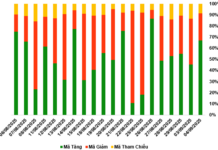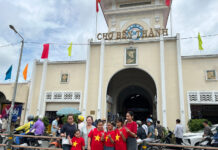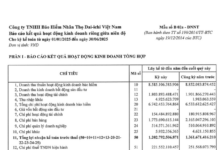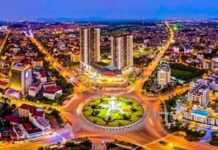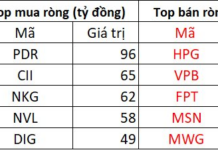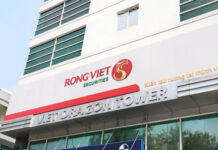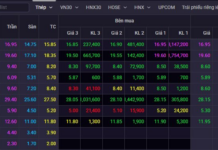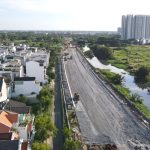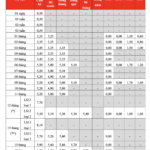The Department of Natural Resources and Environment of Ho Chi Minh City has recently sent a document to relevant units regarding the construction of a decision on regulations for land allocation limits for households and individuals who have been using the land before December 18, 1980, and from December 18, 1980, to October 15, 1993, in the city, as stipulated in Article 141, Clause 5 of the 2024 Land Law.

The Department of Natural Resources and Environment proposes to reduce land allocation limits in Thu Duc City and districts with a high urbanization rate. |
The Department of Natural Resources and Environment is inheriting Decision 18/2016 of the Ho Chi Minh City People’s Committee on land allocation limits and plans to readjust the limits by reducing the area and narrowing down the administrative units to which the limits apply.
Specifically, the land allocation limit for households and individuals in districts 1, 3, 4, 5, 6, 7, 8, 10, 11, 12, Go Vap, Binh Thanh, Phu Nhuan, Tan Binh, Tan Phu, Binh Tan, and Thu Duc City is proposed to be no more than 160 square meters per person.
For towns in Binh Chanh, Hoc Mon, Cu Chi, Nha Be, and Can Gio districts, as well as urban planning areas in these counties, the land allocation limit is suggested to be no more than 200 square meters per person.
In rural residential areas in the communes of Binh Chanh, Hoc Mon, Cu Chi, Nha Be, and Can Gio districts, the limit is proposed to be no more than 250 square meters per person.
Compared to the previous regulations, Thu Duc City (formerly Thu Duc, District 2, and District 9) and Districts 7, 12, and Binh Tan have seen a reduction in land allocation limits from 200 square meters per household to 160 square meters.
The Department of Natural Resources and Environment of Ho Chi Minh City explains that the urbanization rate in Districts 7, 12, and Binh Tan, as well as Thu Duc City, is rapidly increasing, with housing development similar to that of Districts 6, 8, Go Vap, and Binh Thanh.
The density and land fund for housing construction in the urban planning areas of Binh Chanh, Hoc Mon, Cu Chi, Nha Be, and Can Gio districts are not inferior, and in some cases even higher, than in the towns of these districts.
Additionally, the demand for residential land to build houses in all areas of the city is very high, but the unallocated land fund is currently low.
|
Decision No. 18/2016 of the Ho Chi Minh City People’s Committee on land allocation limits for households and individuals: Districts 1, 3, 4, 5, 6, 8, 10, 11, Go Vap, Binh Thanh, Phu Nhuan, and Tan Binh: no more than 160 square meters per household. Districts 2, 7, 9, 12, Binh Tan, and Thu Duc, and towns in Binh Chanh, Hoc Mon, Cu Chi, and Nha Be districts: no more than 200 square meters per household. Urban planning areas: no more than 250 square meters per household. Can Gio district and rural residential areas in the communes of Binh Chanh, Hoc Mon, Cu Chi, and Nha Be districts: no more than 300 square meters per household. |
QUOC ANH
Proposed Planning for Adding 2 New Cities in Ho Chi Minh City
According to Architect Ngô Viết Nam Sơn, Ho Chi Minh City should consider planning two cities within the city in the south and north.



